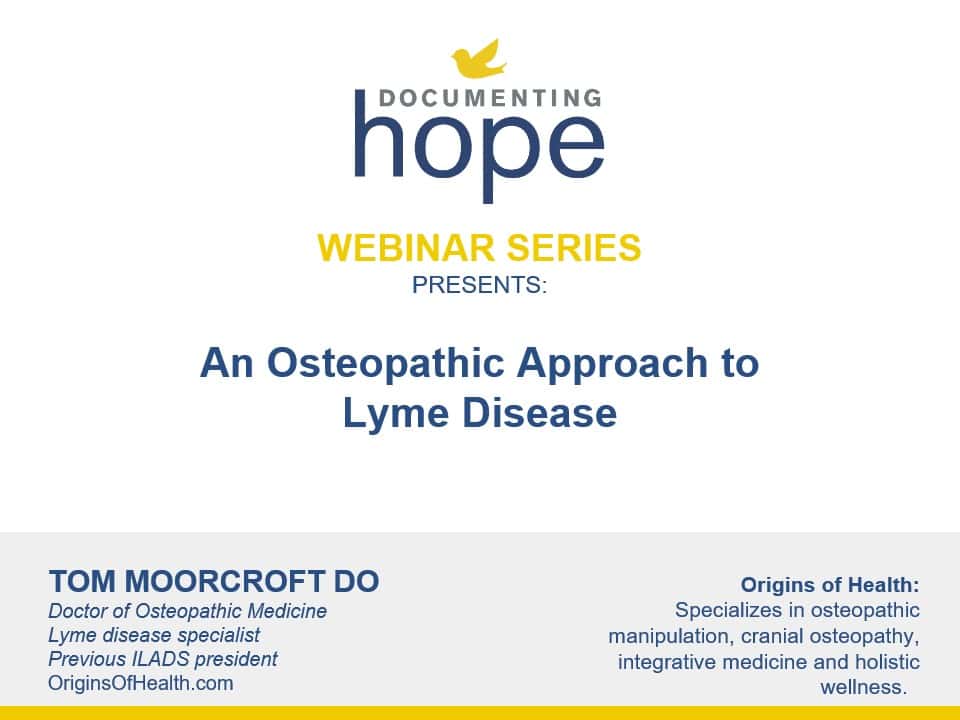What Is Osteopathy?
Osteopathy is a very unique philosophy of healing and medical care that incorporates the treatment of the fascia, bones, muscles and joints using techniques like physical manipulation and massage. Many osteopathic physicians (Doctor of Osteopathy or DOs) have family practices that treat patients mainly with manipulation, massage, and other structurally-oriented techniques. Others work in a more conventionally medical manner and become specialists or surgeons. If you are looking for an osteopath who focuses on the structural and functional parts of their patient’s health, you may ask them if they do manipulation. Some osteopathic physicians, especially those in conventional medical settings such as hospitals and large health systems, may not offer manipulation as part of their practice.
Osteopathy is a distinct branch of medicine with a comprehensive and holistic focus. Founded in the late 1800s by Dr. Andrew Taylor Still, osteopathy centers on the understanding that the body’s systems are interconnected and function optimally when in balance. The approach is both philosophical and practical, combining rigorous medical training with specialized study of the musculoskeletal system and a commitment to treating the whole person—not just their symptoms.
In the U.S., osteopathic medicine is practiced by fully licensed physicians known as Doctors of Osteopathic Medicine (DOs). Like their MD counterparts, DOs complete four years of medical school, residency training, and are licensed to prescribe medication, perform surgery, and practice in all medical specialties. What sets DOs apart is their additional training in osteopathic principles and Osteopathic Manipulative Medicine (OMM), which emphasizes hands-on techniques to diagnose, treat, and prevent illness.
Osteopathy is not simply about “bones” or “manipulation.” Instead, it’s a system of medicine that addresses health from a whole-person perspective—body, mind, and spirit—aiming to discover and facilitate the body’s inherent capacity to heal itself.
What Are the Principles of Osteopathy?
Osteopathy is based on four foundational principles, which shape both clinical decision-making and the doctor-patient relationship:
- The Body Is a Unit: Osteopathic medicine recognizes the body as an integrated whole, where physical, emotional, and spiritual health are interconnected. Disease—or health—cannot be isolated to one organ or system.
- The Body Possesses Self-Regulatory and Self-Healing Mechanisms: Given the right circumstances, the body often has the capacity to heal itself. Osteopaths aim to remove barriers to this natural process, supporting homeostasis and recovery.
- Structure and Function Are Reciprocally Interrelated: A fundamental tenet is that the structure of the body—the bones, muscles, joints, and tissues—affects its function and vice versa. Misalignment or restriction in the body’s structure can have ripple effects on overall health.
- Rational Treatment Is Based on These Principles: Treatment should address the root causes of illness, considering the individual as a whole and utilizing the best available understanding of how structure, function, and self-regulation interact.
How Are Osteopathic Doctors (DOs) Similar to Medical Doctors (MDs)?
The core sciences, clinical rotations, and subspecialty training in osteopathic and allopathic medical schools are fundamentally similar. Both types of physicians are committed to ongoing education and evidence-based care. In terms of their educational pathway and professional scope, osteopathic doctors (DOs) and allopathic doctors (MDs) are remarkably alike:
- Education and Training: Both DOs and MDs complete a four-year undergraduate degree, followed by four years of medical school. They then undergo three to seven years of residency training in a specialty of their choice.
- Licensing and Board Certification: DOs and MDs pass national licensing exams and are eligible for board certification in all specialties, including surgery, internal medicine, pediatrics, and more.
- Practice Rights: In all 50 U.S. states, DOs have full medical practice rights, can prescribe medications, perform surgical procedures, and admit patients to hospitals.
- Clinical Roles: In hospitals and clinics, DOs and MDs often work side by side. Many patients may not even realize whether their physician is a DO or an MD.
How Are Osteopathic Doctors (DOs) Different from Medical Doctors (MDs)?
While the two types of doctors share similarities, several key differences distinguish the osteopathic approach:
- Holistic, Whole-Person Focus: While the trend in allopathic medicine is increasingly holistic, osteopathy places a special emphasis on treating the whole person—mind, body, and spirit. DOs are trained to consider how emotional, social, and lifestyle factors contribute to disease.
- Additional Training in Musculoskeletal System: DOs receive around 200 additional hours of training in the musculoskeletal system—bones, muscles, nerves, and how they interact—during medical school. This enables them to identify and address issues that may not be obvious through standard tests or examinations.
- Osteopathic Manipulative Treatment (OMT): A hallmark of osteopathic medicine is OMT, a hands-on technique that can alter the body’s structure and enhance the body’s innate ability to heal itself so it may function more efficiently. Through stretching, gentle pressure, and resistance, DOs can relieve pain, promote healing, and improve function.
- Preventive Medicine and Primary Care: Osteopathic medical education places a strong focus on primary care and prevention. DOs are especially prevalent in family medicine, internal medicine, and pediatrics, and are champions of health maintenance and disease prevention.
- Philosophy and Communication: Many patients report that DOs spend more time listening, integrating patient preferences, and collaborating on treatment plans.
What Kind of Conditions Can Be Treated by an Osteopath?
Osteopathic doctors are trained and licensed to manage the full spectrum of medical conditions—everything from acute illnesses and injuries to complex, chronic diseases. While many people seek a DO for musculoskeletal complaints, the scope of osteopathic practice encompasses the entire healthcare spectrum—from acute care and surgeries to chronic disease management, preventive medicine, and wellness.Some of the conditions commonly treated with osteopathic approaches include:
- Musculoskeletal Pain: Back pain, neck pain, joint pain, and sports injuries are classic areas of osteopathic intervention, especially using OMT.
- Headaches and Migraines: Evaluating structural imbalances and muscle tension may help reduce headache frequency and severity.
- Chronic Conditions: Osteopathy can offer supportive care for conditions such as arthritis, fibromyalgia, chronic fatigue, and digestive disorders by addressing musculoskeletal alignment, movement, and lifestyle.
- Respiratory Disorders: Through gentle manipulation and breathing techniques, DOs can help alleviate symptoms of asthma and bronchitis.
- Pregnancy-Related Complaints: Osteopaths can address musculoskeletal complaints, pain, and function in pregnancy and postpartum.
- Pediatric Conditions: Issues such as colic, ear infections, and plagiocephaly (flat head syndrome) may benefit from osteopathic care in children.
- Neurodevelopmental Disorders: Often times, many children with neurodevelopmental disorders such as autism, ADHD, Sensory Processing Disorder, developmental delays and learning disabilities have injury resulting from the birthing process to the back of the skull where the first cervical vertebrae attach to the base of the skull, causing the neck to jam up against the skull base or occiput. The injury causes cranial compression and decreased blood flow in the brain, which ultimately affects the nervous system and brain functioning. OMT can help increase the blood flow to the brain which in turn can help calm down the nervous system and increase brain functioning. Some parents of non-speaking children such as those with autism or those with speech and language delays report that their children’s ability to speak improved tremendously after osteopathic manipulation. Osteopathic manipulation is also very effective in draining fluid in the ears with chronic ear infections.
What Are Some of the Root Causes of Chronic Health Conditions That Osteopathic Medicine Addresses?
Osteopathic medicine seeks to identify and address the root causes of illness, not just the symptoms. By taking the time to understand a patient’s full story and body mechanics, DOs are fully equipped to intervene at these foundational levels. Some of these root causes include:
- Structural Imbalances: Minor misalignments or dysfunctions in the musculoskeletal system can create a cascade of effects, from nerve irritation to impaired blood flow, ultimately affecting organ function and leading to pain or other chronic complaints.
- Chronic Stress and Emotional Health: Physical tension from stress often manifests structurally (tight muscles, headaches) and can contribute to chronic disease. DOs integrate stress management and mental health into their approach.
- Lifestyle Factors: Poor posture, prolonged sitting, unhealthy diet and lack of sleep can undermine bodily function. Osteopathic care focuses on correcting these factors through education and holistic support.
- Injury and Repetition: Old injuries, even those deemed “minor,” can contribute to years of dysfunction if not fully resolved. Osteopathic assessment and OMT aim to address lingering patterns of restriction or compensation.
- Systemic Inflammation: Inflammation—stemming from lifestyle, dietary, or biomechanical sources—underpins many chronic diseases. Osteopathic physicians target inflammation both medically and through manual therapy.
- Circulatory or Nervous System Blockages: Restricted movement, tension, or poor structural alignment can limit blood, lymphatic, or nerve flow, predisposing to chronic conditions or delaying healing.
What Are Some of the Healing Modalities Used in Osteopathic Medicine?
Osteopathic medicine employs a wide range of modalities, both conventional and unique to the discipline:
- Osteopathic Manipulative Treatment: A core tool, OMT includes various hands-on techniques such as stretching, gentle pressure, articulation, and resistant movements to relieve pain, improve mobility, and enhance function.
- Conventional Medical Treatment: DOs prescribe medications, order lab tests and imaging, and perform surgeries or other medical interventions, just as MDs do.
- Preventive Medicine: Emphasis is given to routine health screening as well as counseling on diet, exercise, sleep, and stress management.
- Lifestyle and Nutritional Counseling: Believing strongly in preventive care, DOs offer guidance and support for healthy eating, physical activity, weight management, and other behaviors.
- Patient Education: Teaching patients about their bodies and conditions is a key part of care—empowering them to make informed decisions and lifestyle changes.
- Referrals to Other Providers: When appropriate, DOs collaborate with physical therapists, nutritionists, mental health providers, and specialists to offer truly integrated care.
- Mind-Body Techniques: Some DOs integrate approaches such as mindfulness, breathwork, relaxation techniques, and stress reduction into their patient care, recognizing the link between mental and physical health.
What Are Benefits of Osteopathic Medicine?
Many patients and healthcare professionals are recognizing the unique benefits of osteopathic medicine, including:
- Holistic & Comprehensive Care: Osteopathy treats the whole person as well as the disease, addressing emotional, social, and structural factors alongside medical needs.
- Focus on Prevention: By prioritizing preventive care, osteopathic medicine helps patients maintain health and avoid unnecessary interventions or chronic complications.
- Reduced Reliance on Medication: OMT and other hands-on therapies may ease pain and restore function without immediately resorting to pharmaceutical solutions, reducing the risk of side effects and dependency.
- Patient-Centered Approach: DOs are known for their listening skills, empathy, and partnership with patients in developing personalized treatment plans.
- Enhanced Function & Quality of Life: By optimizing the structure and mechanics of the body, osteopathy helps restore mobility, alleviate pain, and improve daily functioning.
- Versatility: Osteopaths are trained to manage acute and chronic illness, treat across the lifespan, and serve in primary care or specialty roles.
- Support for Complex and Chronic Issues: Patients who have fallen through the cracks of conventional medicine may find new answers and relief through the osteopathic lens.
Long-Term Benefits of Osteopathy for Children with Neurodevelopmental Disorders
Osteopathy can be very effective in making changes over a period of time. The following improvements after osteopathy have all been reported by parents:
- Improved focus
- Improved concentration
- Improved social interaction
- Improved verbal communication
- Less repetitive behaviors
- Stopping seizures
- Stopping head banging
- Engaging in imaginative play
Still Looking for Answers?
Visit the Documenting Hope Practitioner Directory to find a practitioner near you.
Join us inside our online membership community for parents, Healing Together, where you’ll find even more healing resources, expert guidance, and a community to support you every step of your child’s healing journey.







